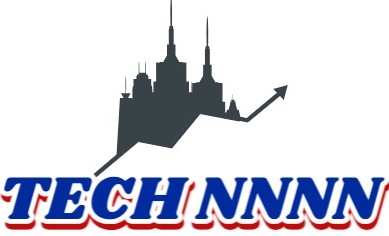Enterprise Communication Hub: 3345254715, 3347419862, 3349567300, 3365091060, 3395659479, 3439964548

The concept of an Enterprise Communication Hub is increasingly relevant in today’s fast-paced business environment. These platforms streamline interactions, enhance collaboration, and foster an efficient workflow. Organizations are recognizing the importance of integrating advanced features to meet user needs. As they navigate common communication challenges, the potential of these hubs continues to evolve. What implications do future trends hold for their effectiveness and adoption in various industries?
Understanding Enterprise Communication Hubs
An enterprise communication hub serves as a central platform that streamlines interactions within an organization.
By facilitating digital integration, it enhances collaboration and information sharing among teams.
Facilitating digital integration, it significantly boosts collaboration and enhances information sharing within teams.
This centralized approach significantly improves user experience, allowing employees to connect effortlessly across various channels.
Ultimately, such hubs empower organizations to operate more effectively, fostering a culture of open communication and innovation.
Key Features and Functionalities
Numerous key features and functionalities define an effective enterprise communication hub, each contributing to a seamless user experience.
- Customizable interfaces allow users to tailor the platform to their specific needs.
- Integration capabilities ensure compatibility with existing tools and software.
- Real-time collaboration fosters teamwork and enhances productivity across departments.
These elements collectively empower organizations to communicate more efficiently and effectively.
Benefits of Implementing an Enterprise Communication Hub
Implementing an enterprise communication hub offers significant advantages, including enhanced collaboration tools that facilitate teamwork across departments.
Additionally, streamlined communication channels reduce confusion and improve information flow, leading to more efficient operations.
These benefits can ultimately drive productivity and foster a more connected organizational culture.
Enhanced Collaboration Tools
How can enhanced collaboration tools transform the way teams communicate and work together? By integrating advanced collaboration platforms, organizations can achieve seamless team synchronization, leading to improved efficiency and innovation.
These tools empower teams to share ideas, manage projects, and engage in real-time discussions.
- Increased productivity
- Enhanced creativity
- Strengthened team dynamics
Streamlined Communication Channels
A well-structured enterprise communication hub can significantly enhance the efficiency of team interactions by providing streamlined communication channels.
By enabling integrated platforms, organizations can foster seamless collaboration, leading to improved decision-making and faster project turnaround.
Streamlined workflows minimize confusion and ensure that team members remain focused, ultimately enhancing overall productivity and allowing for a more agile response to evolving business needs.
Case Studies: Successful Implementations
Success in enterprise communication often hinges on the effective integration of technology and strategy.
Case studies reveal how organizations have achieved remarkable outcomes through successful strategies and precise implementation metrics, enhancing collaboration and productivity.
- Improved stakeholder engagement
- Increased operational efficiency
- Enhanced data-driven decision-making
Overcoming Communication Challenges
While organizations increasingly rely on digital communication tools, they often face significant challenges that can hinder collaboration and productivity.
Communication barriers, such as varying technological proficiencies and cultural differences, can impede effective interaction.
To overcome these challenges, organizations must foster an inclusive environment, offer training, and promote open dialogue, ensuring that all voices are heard and valued.
Fostering inclusivity, providing training, and encouraging dialogue are essential for valuing every voice in the organization.
Ultimately, this approach enhances teamwork and innovation.
Future Trends in Enterprise Communication
As enterprises evolve, future trends in communication will likely be shaped by AI-powered tools that enhance efficiency and personalization.
Innovations in remote collaboration are set to transform how teams interact, breaking down geographical barriers.
Additionally, enhanced data security measures will be critical in safeguarding sensitive information, ensuring trust in digital communication platforms.
AI-Powered Communication Tools
With the rapid evolution of technology, AI-powered communication tools are poised to revolutionize enterprise communication.
These innovations enhance efficiency through seamless ai integration and provide valuable insights via communication analytics. Businesses can anticipate improved collaboration, enhanced decision-making, and personalized interactions.
- Streamlined workflows
- Enhanced data-driven insights
- Personalized communication experiences
Remote Collaboration Innovations
The future of enterprise communication is set to be transformed by innovative remote collaboration solutions that prioritize connectivity and teamwork.
Organizations are increasingly adopting virtual teamwork strategies and remote engagement techniques to enhance productivity and foster creativity.
These advancements will empower teams to collaborate seamlessly across geographies, breaking down barriers and enabling a more inclusive and dynamic work environment that champions flexibility and innovation.
Enhanced Data Security Measures
How can organizations ensure robust protection of sensitive information in an increasingly digital landscape? Enhanced data security measures are vital.
Implementing comprehensive strategies such as:
- Data encryption for safeguarding sensitive data
- Access controls to regulate user permissions
- Incident response plans for swift action against breaches
These elements, supported by risk assessments and security audits, help organizations meet compliance regulations and fortify user authentication while enhancing threat detection.
Conclusion
In conclusion, the Enterprise Communication Hub emerges as a modern-day agora, where collaboration flourishes and ideas converge. By embracing its key features and understanding its benefits, organizations can navigate the complexities of communication with ease. As they overcome challenges and adapt to evolving trends, these hubs become not just tools, but vital lifelines that foster unity and drive success. In this digital age, they illuminate the path towards a more connected and productive workplace, echoing the age-old pursuit of collaboration.



